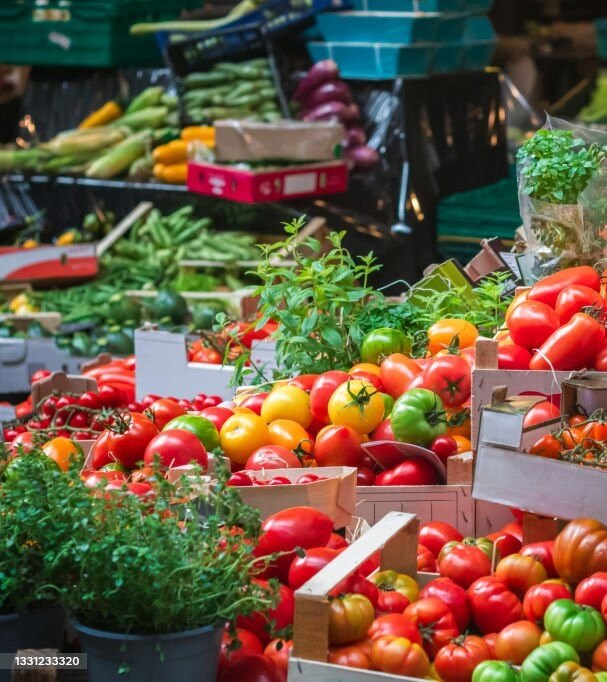Agri-tech hub
In this portfolio our agronomists use trending innovative methods to produce agricultural output efficiently. Ready markets ensure that fresh produce is available to feed and nourish the nation meeting requirements for nutrition.

Using advanced techniques, our multi-faceted team can plan, forecast and predict harvests and yields depending on various factors.
At the planning stage, the teams can determine which crops are viable in a particular season and area based on lab soil tests.
Some of the techniques used to further optimize crop yield make use of technology. Software together with drone technology and GPS systems allow for effective crop rotation ensuring soil fertility.
Advanced soil lab tests and records enable the efficient and productive use of farming land. The use of drones to administer pesticides minimises costs at this stage in the farming process.
We contribute to maintenance and management of farm infrastructure such as irrigation systems, drip networks, farm implements and other mechanisations.
We ensure proper usage of farm mechanisations introduced to farming schemes allowing for their long term use.

Land use
Various options exist in the sector, from land owners to leaseholds. Our operations span from rural land to commercial establishments and our practices follow adherence to guidelines and laws of the country.

Inputs
We have forged partnerships with suppliers of the highest grade of seeds and seedlings that offer an above rate of yield and are organic. Our agronomists are knowledgeable about varieties and can match them to various conditions such as seasons and tillage.

Markets
Markets are available and new contacts are made continually through networking both locally and abroad for export opportunities.
Frequently asked questions
-
- Supplementary income can subsidise regular income for the individual thereby providing further security.
- The creation of agri-hubs will create agritourism which will further boost income generation as well as provide a connection to nature for individuals participating in the activities.
- Creation of well being and food security
- Educational purposes through sharing of knowledge ad best practices.
- Sustainability through promotion of good farming practices mens an agenda of doing good for future generations will have been met.
- Community engagements through farming creates harmony thereby making the world a better place to be.
-
- Define your goals and objectives
- Research and consider involving other individuals who are knowledgeable
- Assess your own resources and determine if your initial goals will be met with current resources. If there is a gap, you may consider consulting to determine alternatives, for example, unavailability of land could have an alternative or option to lease.
- Develop a business plan in direct consultation with our knowledgeable business partners and consultants.
-
Low cost crops are regarded as a good entry point because of their higher returns and low minimum initial investment. They are profitable for small farms. It is however important to consider the local climate, soil content and market conditions.
- Garlic: It is high in demand, offers a fair return and is adaptable to seasons being planted at the beginning of autumn for a summer harvest.
- Leafy greens (lettuce, broccoli, cauliflower, cabbage, peas): These crops grow quickly with a low startup cost.
- Herbs (parsley, coriander, basil, thyme, rosemary): These can be grown in relatively small spaces offering a high value per square meter.
- Root vegetables (potatoes, beetroot and carrots): These have multiple uses, have a high shelf life and are largely market friendly.
Our consultants at RemitSME are ready to work with you and ensure the risks are minimised or eliminated.
-
- Land tenure security: This may discourage some farmers to invest on land which may be perceived as not being readily available to them.
2.Market access: They may be limited to access some markets due to distance and other factors beyond their control.
- Climate change: Weather catastrophe such as el nino may be beyond the control of the small hold farmer and this may have a negative impact on their returns.
- Soil fertility: Soil content may not match some varieties of crops within a specific season thereby affecting crop yield.
RemitSME has some interventions that aim to address some of the challenges such as the establishment of Agri-Tech based Agri-hubs that have been pre-developed and are available for lease.
-
- Conservation agriculture: minimising soil disturbance and practising crop rotation.
- Agroforestry: Integrating trees with crops and livestock to optimise land use.
- Rainwater harvesting: collecting and storing rainwater for use during dry spells.
- Integrate soil fertility management by using a combination of organic and inorganic fertilizers.
- Legume cropping to fix nitrogen levels
- Fertilixer micro-dosing by placing small economic amounts of fertiliser next to the crop to reduce costs and maximise the action of fertilizer on the plant.
- Planting basins that are dug near the plant to collect nutrients and use little water.
- Push-pull technology by using plants that repel pests instead of using traditional pesticides.
These methods are adopted by RemitSME as part of efforts and contribution to increase in food production, sustainable intensification and efficiency of farming practices on existing farmlands while t the same time minimizing pressure on the environment and climate.
